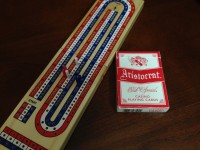During the last three years my partner Teresa Posakony has been studying the impact of trauma. So as to create trauma-informed education. Trauma-informed group process design. She tells me that for many people, following an experience of trauma, in which there is a full reaction (shock, fear, physical and emotional wound, etc.) it takes something similar to the initial trauma by only five percent to trigger a significant amount the full and initial emotion. Yikes!
Teresa further tells me that for many people, the body has a way of storing the experience. The shock. The fear. The hurt. They all become stored in one’s body and mind, and often in a way that is not visible to us. Most of us tend to want to avoid feeling those things again, so we create, quite naturally, behaviors that will prevent it. Barriers. Protectors. Limits. And sometimes unhelpful or harmful actions.
Here is a simple example that I have lived.
When I was in my young teens, I was on a trip with my mom and several of her friends, a group of about a dozen. On this trip we were all staying overnight in a hotel. I had brought with me a cribbage board so that we could play. The cribbage board was a present given to me for my  birthday a few months prior. On a coffee table in the middle of the room, sat my cribbage board. Along with a plate of cheese and crackers and some sliced sausage. Fun snacks that we were all enjoying. Most of our group was gathered around that table enjoying each others’ company. One of my mom’s friends, my friend too, had a knife on the table and pretended to stab my new cribbage board. I didn’t like that idea, though he was only joking. “Hey, that’s my crib board. Don’t!” I said as I impulsively reached to grab my board. Unfortunately, I reached right into the path of the knife. This friend sliced the top of my finger, nearly cutting off the tip.
birthday a few months prior. On a coffee table in the middle of the room, sat my cribbage board. Along with a plate of cheese and crackers and some sliced sausage. Fun snacks that we were all enjoying. Most of our group was gathered around that table enjoying each others’ company. One of my mom’s friends, my friend too, had a knife on the table and pretended to stab my new cribbage board. I didn’t like that idea, though he was only joking. “Hey, that’s my crib board. Don’t!” I said as I impulsively reached to grab my board. Unfortunately, I reached right into the path of the knife. This friend sliced the top of my finger, nearly cutting off the tip.
Nobody meant harm. My finger was stitched and healed soon. There remains only a slight scar.
Now, however, forty years later, I remain noticeably fearful of knives. Butcher knives in particular, just like the one my mom’s friend held in that hotel room. Not debilitating. I use knives. I cook. I chop. I whittle sticks. I pare using my wonderful opposable thumb. None of that is the problem. But when I recall that experience with my cribbage board, to this day, I wince with pain and a kind of fear and avoidance. My shoulders become very tight. I can’t seem to help gritting my teeth, and turning my head away so that I might not see that memory.
Five percent similarity. Lots of trigger.
I shared this story on the weekend while working with a team of a dozen good leaders at Grinnell, Iowa’s United Church of Christ Congregational. My point of sharing the story, though I winced through the telling of it, was to point to the five percent similarity required to trigger reactions. This church’s really fantastic pastor, Cameron Barr, had just facilitated the group in creating and mapping a twenty year history of their congregation. Those twenty years included some trauma and significant difficulty including a serious accident for a pastor, needing to dismiss several previous pastors, a period of significant debt recovery, and confusingly diminished set of church programs. Cameron was pointing out that though the current circumstances resemble past circumstances they are not at all the same. Be aware of the trigger. There isn’t need to respond with the same 100% that occurred at various points in those twenty years.
Groups also have trauma. Groups also protect, naturally. Groups also trigger.
Bringing awareness to that dynamic — five percent similarity that creates a fully triggered emotional trauma — is a really helpful step of leadership.
